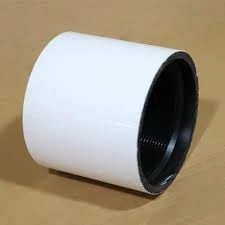- Afrikaans
- Albanian
- Amharic
- Arabic
- Armenian
- Azerbaijani
- Basque
- Belarusian
- Bengali
- Bosnian
- Bulgarian
- Catalan
- Cebuano
- Corsican
- Croatian
- Czech
- Danish
- Dutch
- English
- Esperanto
- Estonian
- Finnish
- French
- Frisian
- Galician
- Georgian
- German
- Greek
- Gujarati
- Haitian Creole
- hausa
- hawaiian
- Hebrew
- Hindi
- Miao
- Hungarian
- Icelandic
- igbo
- Indonesian
- irish
- Italian
- Japanese
- Javanese
- Kannada
- kazakh
- Khmer
- Rwandese
- Korean
- Kurdish
- Kyrgyz
- Lao
- Latin
- Latvian
- Lithuanian
- Luxembourgish
- Macedonian
- Malgashi
- Malay
- Malayalam
- Maltese
- Maori
- Marathi
- Mongolian
- Myanmar
- Nepali
- Norwegian
- Norwegian
- Occitan
- Pashto
- Persian
- Polish
- Portuguese
- Punjabi
- Romanian
- Russian
- Samoan
- Scottish Gaelic
- Serbian
- Sesotho
- Shona
- Sindhi
- Sinhala
- Slovak
- Slovenian
- Somali
- Spanish
- Sundanese
- Swahili
- Swedish
- Tagalog
- Tajik
- Tamil
- Tatar
- Telugu
- Thai
- Turkish
- Turkmen
- Ukrainian
- Urdu
- Uighur
- Uzbek
- Vietnamese
- Welsh
- Bantu
- Yiddish
- Yoruba
- Zulu
tubing pup joint
Understanding Tubing Pup Joints Essential Components in Oil and Gas Operations
In the oil and gas industry, efficient extraction processes rely heavily on the integrity and functionality of various components within drilling and production systems. Among these components, tubing pup joints play a pivotal role. These short sections of pipe are designed to connect different sections of tubing, allowing for the fine-tuning of the overall length of the tubing string. In this article, we will explore the importance, types, applications, and benefits of tubing pup joints in petroleum operations.
A tubing pup joint is a crucial accessory used in the completion of wells
. It typically measures between 2 to 10 feet in length and is available in various diameters and wall thicknesses to suit the specific requirements of a given well. The main purpose of the pup joint is to accommodate situations where the desired length of tubing does not exactly match the standard length of commercially available tubing sections. By adding or removing pup joints, engineers can achieve precise measurements, ensuring the tubing string fits perfectly within the wellbore.There are two principal types of pup joints—standard and specialty. Standard pup joints are commonly used for general applications where traditional design and materials suffice. In contrast, specialty pup joints may be crafted for specific purposes, such as high-pressure environments, corrosive conditions, or unique well configurations. These specialty joints often incorporate advanced materials and coatings to enhance durability and longevity.
tubing pup joint

The applications of tubing pup joints are extensive. They are utilized in various phases of oil and gas operations, including drilling, completion, and workover processes. By enabling the customization of tubing string lengths, pup joints help optimize production efficiency and ensure that the placement of the tubing facilitates effective hydrocarbon flow. Additionally, they are essential in the maintenance of well integrity, allowing for adjustments that can accommodate changes in the reservoir conditions over time.
One of the primary benefits of using tubing pup joints is the enhanced flexibility they provide in well design and management. Engineers can easily modify the length of the tubing string as required without the need for extensive retooling or replacement of larger tubing sections. This adaptability significantly reduces operational downtime and costs associated with drilling and completion activities.
Moreover, pup joints contribute to the overall safety of oil and gas operations. The ability to tailor the tubing string reduces the risk of equipment failure or leaks, ensuring that production remains efficient and safe. With the proper installation and maintenance, pup joints can provide reliable service throughout the lifespan of the well.
In summary, tubing pup joints are essential components that facilitate the efficient and flexible design of tubing strings in oil and gas applications. Their versatility in length and design, combined with their critical role in ensuring well integrity and safety, makes them invaluable in modern petroleum engineering. As the industry continues to evolve, the significance of these seemingly simple components should not be overlooked.
-
Tubing Pup Joints: Essential Components for Oil and Gas OperationsNewsJul.10,2025
-
Pup Joints: Essential Components for Reliable Drilling OperationsNewsJul.10,2025
-
Pipe Couplings: Connecting Your World EfficientlyNewsJul.10,2025
-
Mastering Oilfield Operations with Quality Tubing and CasingNewsJul.10,2025
-
High-Quality Casing Couplings for Every NeedNewsJul.10,2025
-
Boost Your Drilling Efficiency with Premium Crossover Tools & Seating NipplesNewsJul.10,2025







